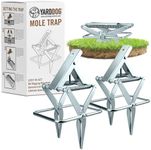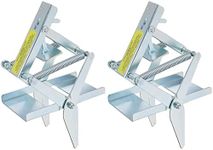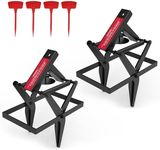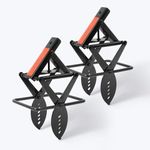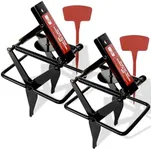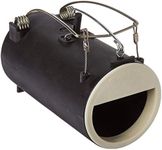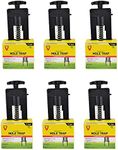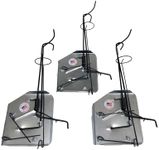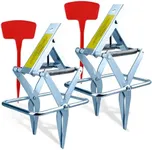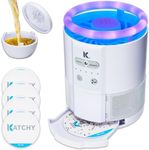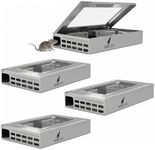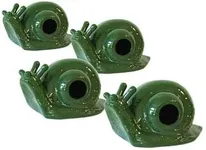Buying Guide for the Best Mole Traps
Choosing the right mole trap is all about ensuring it's effective for your yard, easy for you to use, and safe for pets and people. Moles can be persistent, so finding a trap that fits your experience level and yard conditions is crucial. Understanding the key features below will help you make a smart decision that matches your needs and gives you the best results.Trap TypeTrap type refers to the design and method the trap uses to catch or kill moles. The main categories are scissor/jaw traps, harpoon/spike traps, and tunnel traps. Scissor traps close sharp jaws around the mole, harpoon traps use spikes that drive down when triggered, and tunnel traps are set inside the tunnel to enclose or kill the mole when it passes through. Picking the right type depends on your comfort level and the soil conditions; for example, scissor and harpoon traps work well in firm soil, while tunnel traps are useful if you prefer minimal disturbance to the ground. Consider how comfortable you are setting and handling each style, and whether you want a visible or a more discreet trap.
Ease of SettingEase of setting describes how simple and safe the trap is to put in place. Some traps require more strength or dexterity to set, while others are designed to be set with little effort. If you’re new to mole trapping or have limited hand strength, you may want to look for traps that advertise easy or tool-free setting. The easier it is to set the trap correctly, the more effective it will be at catching moles and the safer it will be for you.
Safety FeaturesSafety features are built-in mechanisms that prevent accidental injury to people, pets, or non-target animals. Some traps have safety catches to prevent them from snapping unintentionally, or covers to shield the trigger mechanism. For households with children or pets, or if the trap will be placed in a high-traffic area, choosing a model with strong safety features is important to reduce risk. Think about where you'll be placing the trap and who might encounter it when making your decision.
Durability and MaterialDurability refers to how well the trap holds up to repeated use and different weather conditions. Materials like galvanized steel are long-lasting and resist rust and bending, while plastic components might degrade or break sooner. If you expect to reuse the trap over multiple seasons or in tough soil, a sturdy, high-quality material is important. Consider whether you want a trap that’s a one-off solution or one that will last you through multiple infestations.
VisibilityVisibility is about how easy it is to spot the trap once it's been set. Some traps are designed so you can easily see if they’ve been triggered without digging them up, while others are more hidden and harder to check at a glance. If you want to check the trap's status frequently or avoid disturbing the trap site, pick one that’s easy to see when tripped. For those wanting a discreet setup, a less visible trap might be better, but remember it may be harder to monitor.
Environmental ImpactEnvironmental impact means the trap’s effect on the local ecosystem. Some traps are lethal, while others claim to be more humane by capturing moles alive (though this is less common and may require checking local regulations). If you’re concerned about humane control or minimizing harm to other animals, research how the trap functions and consider if its design could affect more than just moles. Let your personal values guide you in balancing effectiveness with compassion.
